How to Clean Your Fly Line
and Apply Line Dressing
April 24th, 2022
Your fly fishing line should last you at least a year, and likely several years. But, this does require some easy care and maintenance.
Cleaning your dirty fly line is a quick and simple way to prolong the life of your line, as well as increase its buoyancy and your casting distance. It’ll pay great dividends when you’re on the water.
When your floating line sinks, it detracts from your presentation and effectiveness. Fortunately, this is easily avoided. I’ve used the same floating fly line for over 150 outings without issue because I take care of my line.
In the below article I’ll explain to you exactly how to clean your line and add dressing (which takes place immediately after cleaning). Take a few minutes to familiarize yourself with the process and you’ll be glad you did.
The below picture shows you how much gunk I stripped off just a few feet of my fly line.
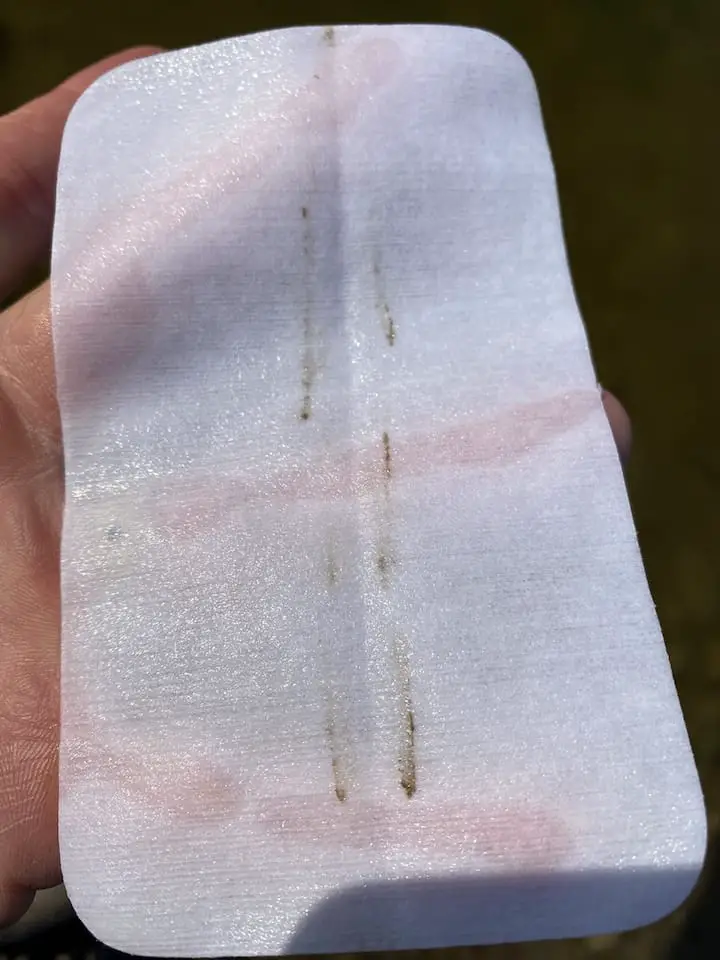
How to Clean Your Fly Line
Here are the steps to effectively clean your fly line and set yourself up for success on the water:
- Get two buckets or containers of warm (not hot) water.
- Add two drops of a gentle hand or dish soap to one of the buckets and stir (the other bucket is for rinsing). Too much soap will have the opposite effect and will add a film to your line. Avoid detergents and anything abrasive since they’ll strip your line of lubricants.
- Pull the fly line off your reel (but stop at the backing), and soak it in the bucket of soapy water for 15-20 minutes. This loosens caked-on dirt and debris.
- Take a soft cloth and get it wet with the soapy water. Start at one end of your line and pull the full length (usually 90-100 feet) through the cloth to remove built-up grime.
- Dry your fly line by pulling it through a soft dry towel. As you pull it through the towel, stretch the line gently. This helps remove any coil memory.
In a pinch, or if you’re traveling, you can use ready-to-use solutions, such as cleaning towelettes by Rio.
Now, if you just wanted to clean your line, you’d be done. But, this is the ideal time to apply line dressing, which we’ll cover farther down in the article.
If you need to clean your line on the fly, just use Rio’s fly line cleaning towelettes. They’re disposable and work great.
Why Should I Clean my Fly Line?
Over time, algae, dirt, salt, and microorganisms will accumulate on your fly line, forming a sometimes invisible grime. This layer of grime will cause your floating line to sink below the water’s surface, and will result in shorter casts due to increased friction in your guides.
Being successful while fly fishing involves many different factors. Each factor makes a difference, and avoiding dirty line is definitely a piece of the puzzle.
Believe it or not, dirty fly line can actually start carving-out a groove in your rod guides.
As if the above reasons weren’t enough, cleaning your fly line will absolutely extend the life of your line, sometimes by several years.
When your line is clean, you’ll notice greater buoyancy and longer casts. This will translate to more fish in your net, for obvious reasons.
Don’t make the mistake of thinking this doesn’t matter. It definitely does.
When Should I Clean my Fly Line?
A good rule of thumb is to clean your fly line after every 3-4 fishing outings. The type of water you’re fishing in should help determine the frequency of cleaning, since ponds have much more algae and dirt than rivers, streams, creeks, and lakes.
Dirty fly line is your enemy.
Here are a few things to watch for:
- If you pull your fly line through your fingers and it feels slightly gritty or there’s minor resistance (anything other than smooth), you should clean your line.
- When your fly line retains its coil memory, a cleaning is in order.
- After you’ve been doing practice casts on grass, pavement, or in a pool, you should inspect your line.
- Casts in saltwater will absolutely result in some salt accumulation, even if it’s not visible to your eyes.
How to Make Fly Line Float Better
Fly lines are hydrophobic, meaning they repel water by design (right out of the box). But it doesn’t last.
Assuming you’re cleaning and dressing your fly line often enough, it’s vitally important that you regularly inspect your line for nicks, cracks, and cuts.
If you’re like me, you often hold your rod with one hand, and some fly line with the other. I’m always in contact with the line, and I can feel imperfections simply through the act of fishing.
The most common issue is small nicks in the line. In my experience, this happens when I inadvertently step on my line with my steel-studded wading boots. It just happens, it’s unavoidable.
Nicks, cracks, and cuts expose the core of your line, which means water can literally seep in through the abrasions. As a result, your fly line loses some of it’s floating ability and begins sinking a few inches below the surface.
If there are big cracks or abrasions, your fly line is on its last leg.
But, dressing your fly line can buy you time.
What is Fly Line Dressing?
Think of fly line dressing as a protective coating–an effective way of sealing and lubricating your line. It’s only applied to floating lines, and shouldn’t be applied to sink-tip or full sinking lines.
The dressing will help make mending noticeably easier too.
The substance is always silicone-based, just like many of the fly floatants on the market. Same exact concept.
Many modern fly lines have some amount of lubrication built-in, and it naturally exudes over time. But, the lubrication also depletes over time, and it can leave the line brittle.
This is precisely why you should always take the opportunity to apply line dressing immediately after washing your line. The color of your line is irrelevant.
In the below picture I show you what the line dressing application process looks like. Pretty straightforward stuff.
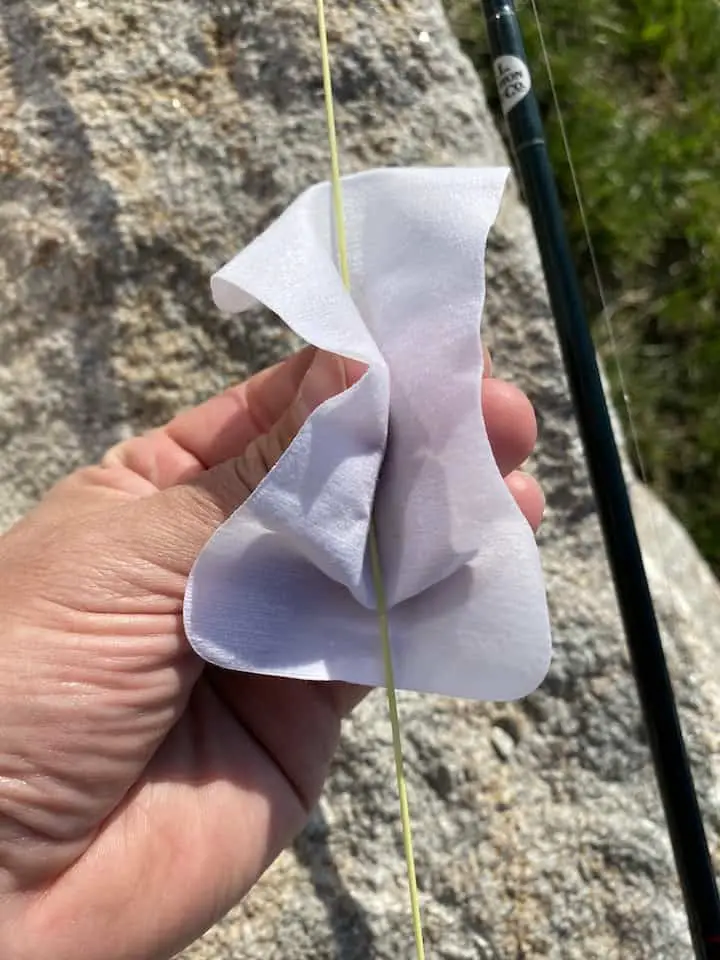
How to Apply Fly Line Dressing
Applying dressing is about as simple as it gets. It takes about two minutes, and you’ll reap the benefits for several outings.
After you’ve cleaned and dried your line, you’re ready to apply dressing.
Fly line dressing is inexpensive and can be conveniently purchased by the bottle, which usually contains 1-2 ounces of solution (reminiscent of white moisturizer).
Add a few drops of the solution onto a clean cloth, and pull your entire fly line through the cloth in both directions. In other words, pull all the line through the treated cloth, and then back the other way.
You’ve now successfully dressed your fly line and you can wind your line back into your reel.
If you want to squeeze every bit of benefit out of the process, you can buff your line the following day with a clean dry cloth.
You might also want to check out an article I wrote on how to grease your leader.
The Best Fly Line Dressings
There are DIY fly line dressing options, and I’ll cover those a little farther down. But, there are two commercial line dressings that I keep coming back to because they work really well and the packaging is compact and convenient:
Scientific Anglers dressing
Their bottle contains 1.1 ounces of solution (33 mL) and comes with a foam cleaning pad. Simple, effective, inexpensive. You can buy extra pads if need be, but the pad it comes with can be washed and reused quite a few times. Feel free to check it out here.
Rio Agent X dressing
Rio makes good fly lines (just like Scientific Anglers) and it only makes sense they’d nail the dressing too. Their product comes with several of what they call “wonder cloths” which you can use to apply the solution. Feel free to check it out here.
A little dressing goes a long way, so you’ll likely only buy 1-2 bottles each year. A small price to pay for slick line flying through your guides.
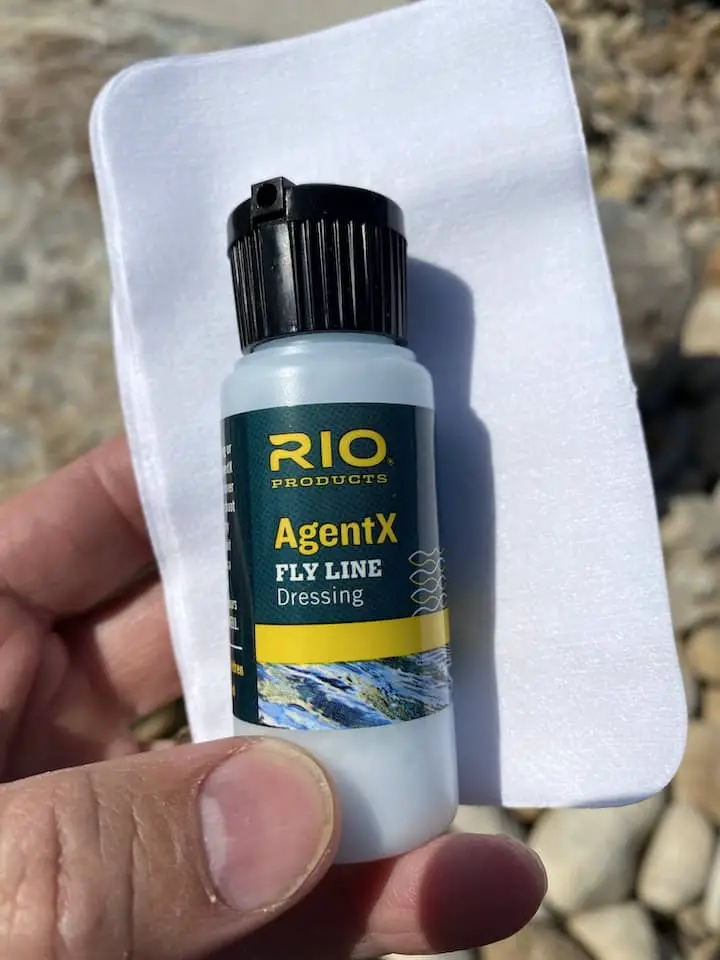
Cleaning Fly Line with Armor All
Some fly anglers insist that Armor All works great on their fly line.
Well, in the short-term it does.
Armor All is for car tires, not your fly line. It contains chemicals that’ll slowly eat away at your fly line until you’re left with porous, cracked line.
In short, don’t clean or dress your fly line with Armor All.
Rain X as a Fly Line Dressing
I know I said earlier that you should stick with 100% silicone dressings, and personally I do, but I have to admit that Rain X actually works well too.
Many fly anglers use it, and I’ve yet to hear a complaint (unlike Armor All). It’s certainly an inexpensive option. It contains some silicones, isopropanol, and a few other ingredients.
I’d be lying if I said I didn’t have some Rain X in my fishing vehicle as a backup.
Speaking of rain, don’t miss my detailed article on fly fishing in the rain.
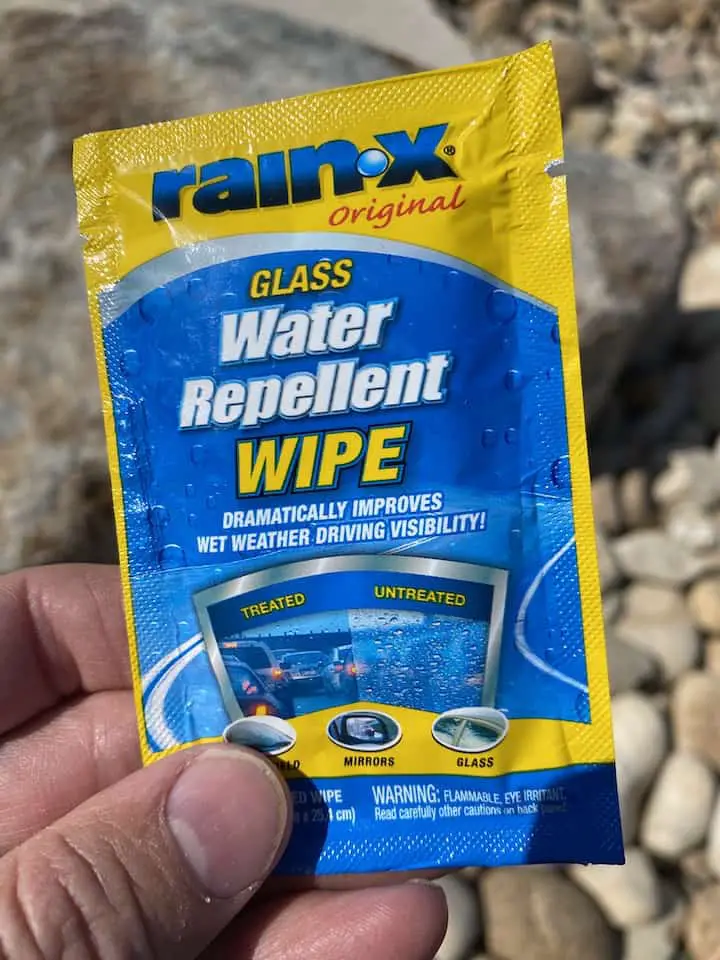
Summary
Keeping your fly line clean and slick is something most fly fishers don’t think about. It’s easy to procrastinate or say you’ll do it next time. In fact, I’d guess that very few anglers clean and dress their lines with any regularity at all.
If you’re one of the few who’s up to the task, you’ll notice an immediate improvement in your line’s ability to float high on the water after cleaning it, and you’ll see an immediate increase in your casting distance after you dress your line.
I encourage you to keep a cleaning pad in your fly fishing pack at all times.
Plus, you’re extending the life of your fly line. That’s a pretty sweet deal.
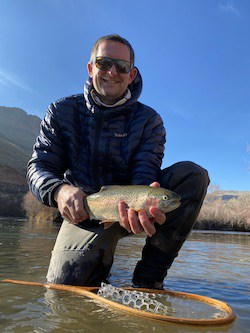
About the Author
My name's Sam and I'm a fly fishing enthusiast just like you. I get out onto the water 80+ times each year, whether it's blazing hot or snow is falling. I enjoy chasing everything from brown trout to snook, and exploring new waters is something I savor. My goal is to discover something new each time I hit the water. Along those lines, I record everything I learn in my fly fishing journal so I can share it with you.
Follow me on Instagram , YouTube, and Facebook to see pictures and videos of my catches and other fishing adventures!


